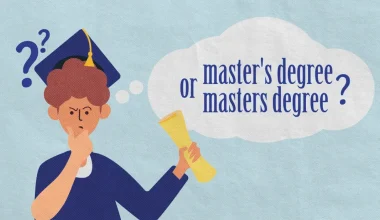IELTS Academic test takers are those requesting admission to a post-secondary institution or a specialized professional registration.
The General IELTS is commonly used for immigration.
The British Council, IDP, and Cambridge ESOL Examinations jointly own IELTS, commonly known as the International English Language Testing System, a test of English language competency. IELTS exams are taken all around the world for a variety of reasons, including immigration, enrollment in undergraduate and graduate programs, and professional association registration.
Whether you are taking the IELTS in India, Africa or America, the syllabus is the same. Additionally, many of the questions that applicants frequently ask are the same.
Learn more about the IELTS syllabus.
Table of contents
What are the Types of IELTS?
IELTS Academic and IELTS General are the two different categories of IELTS tests. These have a similar and barely differentiating syllabus.
Before going into detail about the IELTS syllabus, let’s look at the exam format and the permitted time for each section:
| Section | Number of Questions & Duration | Content | Marks |
| Listening | 4 Recordings 40 Questions 30 Minutes + 10 minutes transfer time | Four recorded monologues and conversations | 1 mark per question |
| Reading | 40 Questions 60 minutes | 3 Passages (can be descriptive, analytical, factual or discursive) | 1 mark per question |
| Writing | 2 Questions 60 minutes | Writing task (Minimum 150 words) Essay (minimum 250 words) | Each task is assessed independently. The assessment of Task 2 carries more weight in marking than Task 1. |
| Speaking | 3 Questions 11-14 minutes | Part 1: Q&A Part 2: Speaking in detail on a familiar topic Part 3: Structure Discussion |
You should read this: How To Prepare For IELTS In 2023 | Study Guide, Practice Test, Exam Dates, & Venue
Overview of IELTS 2023 Syllabus
| IELTS test component | Brief description | Time duration |
| Listening (Same for Academic and General Training) | Four sections, 40 items | 30 minutes |
| Reading (Different for Academic and General Training) | Three sections, 40 items | 60 minutes |
| Writing (Different for Academic and General Training) | Two tasks | 60 minutes |
| Speaking (Same for Academic and General Training) | Three-part one-on-one conversation | 11-14 minutes |
Reading Section of the IELTS
Three general texts on subjects relating to candidates looking to work, relocate overseas, or enrol in undergraduate and graduate programs make up this part.
- There are three sections in the reading modules, each with 40 questions—mostly multiple-choice questions.
- The ability of applicants is tested in several areas, including filling in missing sentences or summaries, recognizing the attitudes/views of the author, and matching lists of phrases.
- To complete the part, students will have 30 minutes and 10 minutes of transfer time. The key distinctions between the two types of Reading sections on the IELTS syllabus are listed below in a table:
IELTS Reading: Academic Vs General
| IELTS Syllabus-Academic | IELTS Syllabus- General Training |
| Three long paragraphs are given which could be factual, descriptive or analytical. The probable source of the paragraphs are newspapers, books, journals, research works, etc. and aim to examine the English skills of working professionals or students. | The three paragraphs are similar in structure to the academic section and can be extracted from the company guidelines, advertisements, brochures, etc. |
IELTS 2023 Syllabus: Writing
Again, there are differences between the Academic and General Training versions of the IELTS writing section. The segment in each version has two tasks:
You should also read: IELTS Exam For Canada PR 2023: Best Score, Practice test, Dates, Registration, Fees
IELTS Academic – Writing Syllabus
IELTS Academic’s writing section consists of two tasks. The topics are of wide interest and suited for applicants wishing to pursue undergraduate and graduate degrees abroad or who want to become registered professionals.
Candidates will be given a graph, table, chart, or another figure for Task 1 and asked to describe, summarize, or otherwise interpret the data in their own words. Test takers can be asked to describe and explain a set of facts, the steps in a process, a flowchart outlining how something operates, or even a specific object or event.
For Task 2, candidates would be required to produce an essay in response to an issue, argument, or point of view. Both assignments need responses to be given in a formal, academic manner. Arguments should be backed up with pertinent examples.
IELTS General Training 2023 – Writing
Two assignments in the IELTS General Training writing section are focused on themes that are of general interest.
Candidates will be given a situation in Task 1 and instructed to compose a letter requesting information or outlining the circumstance. The letter’s style can be informal, formal, or personal.
Participants in Task 2 will be required to respond in writing to a point of view, argument, or problem. The essay’s style can be a little more informal than academic writing. Essay for Task 2. Arguments should be backed up with relevant examples.
IELTS Speaking Syllabus for 2023
The IELTS Speaking examination will be divided into three sections to replicate an in-person oral interview with an examiner and will be videotaped for evaluation purposes, according to the IELTS 2023 syllabus.
The Speaking section, which lasts 11 to 14 minutes, evaluates the candidates’ usage of spoken English. The examiner records the entire speaking examination. The Speaking section is administered in a way that prevents candidates from practising their prepared answers in beforehand.
Part 1
The examiner will enquire about you generally and touch on several well-known subjects, including your home, family, job, studies, and interests. This section lasts between four and five minutes.
Part 2
Candidates for the second round will get a card instructing them to discuss a certain subject. Before speaking for up to two minutes, they will get one minute of preparation time. The second portion of the speaking examination will subsequently be concluded by the examiner asking one or more questions on the same subject.
Part 3
Additional questions related to the subject of Part 2 will be asked of test-takers in Part 3. Candidates will have the chance to talk about more esoteric concepts and concerns in response to these questions. This portion of the test takes four to five minutes to complete.
Note: When answering questions in the Speaking segment of the exam, test-takers should utilize neutral English and refrain from using artificial accents.
IELTS does not have any prerequisites, therefore candidates who want to seek chances overseas can sign up for the test by applying for the IELTS 2023 application form. Four skill sets are tested in the International English Language Testing System.
It should be mentioned that each institution has its selection process for IELTS. The individual should therefore be informed of the application process and the required minimum IELTS score for the organizations to which they are applying. More than 1,600 IELTS test centres in more than 140 countries offer the IELTS exam.
What are the Types of Questions in IELTS Syllabus 2023?
Questions in the writing section can be of the following types:
“Agree/disagree,” “Advantages,” “Causes and Solutions”, and “Address the issue from both sides.”
Types of questions in the Reading section
- Multiple-choice and short-answer questions
- Completing sentences
- matching sentence endings
- matching information, headers and features
- Identifying information
- Identifying the writer’s views/claims
- Sentence completion
- Matching sentence endings
- Diagram label completion; and
- completion of summary, note, table, and flowchart.
Multiple-choice questions, sentence completion, matching, plan, map, diagram labelling, table, flowchart, and summary completion are among the question types in the listening section.
Questions in the Speaking section
Part 1: In this section, the contestants introduce themselves. Candidates must discuss themselves, their backgrounds, hobbies, educational accomplishments, and general interests in addition to answering questions on general issues. The tone, structure, word choice, and sentence structure should all be highlighted.
Part 2: The candidate will be given a topic here and will have roughly two minutes to write down and speak about anything pertinent to the issue. A brief round of questions and answers will follow each candidate’s speech.
The questions in Part 3 will be in-depth, pertinent, and abstract and the conversation will last for a while. Serious concerns and themes will be the focus of the conversation.
See also: Best IELTS Reading Tips From An Expert In 2023
Exam Format for IELTS 2023
The IELTS exam used to solely be given in paper-based format, but it has since added computer-delivered mode as one of its test options. Before registering for the exam, candidates must confirm which IELTS exam centres offer computer-delivered IELTS exams.
Within three to five days of the exam date, the administering organization will announce the IELTS 2023 result.
Instead of waiting 13 days, test-takers can receive their results right away! However, candidates still have the option to take the IELTS exam on paper if they feel more at ease doing so.
IELTS Preparation Tips
IELTS preparation can be done in one of two ways: by self-study or by attending coaching sessions. Your comfort level and level of language skills will determine which approach you to take. If you speak English well, you can study for the exam on your own and skip the coaching sessions. You only need to determine the best time to begin your IELTS preparation.
Here are some important tips you need o know about IELTS and its syllabus.
Get familiar with the examination format and syllabus.
Examine the question paper from the previous year to have a better idea of the questions that were asked and the time given for each area of the IELTS exam.
Plan a preparation strategy that works for you.
Make a study schedule and a list of the best preparation techniques for you. Make notes on what and how much you plan to study each day, covering each component. Draw attention to your areas of weakness and invest more time. Make sure to thoroughly practice sample exams a few days before the test.
Improve your vocabulary as a priority.
Read periodicals, newspapers, and news websites for practice. Use a monolingual dictionary to learn popular expressions and word combinations. Engage in daily English conversation but refrain from translating sentences from your native tongue.
Improve your writing abilities
Practice several writing exercises from sample exams, and don’t forget to monitor your time. Check your work for errors and make sure you adhere to the word count requirement.
Hone your listening abilities
Since you can only listen to the recordings once, take as many listening tests as you can and listen to them without interrupting. Make the essential points while you listen to ensure that you have no difficulties answering.
Concentrate on improving your pronunciation and fluency.
Make a long, English-language speech out loud, and make notes of the things you need to improve. Additionally, you can record speeches on a range of subjects. Start viewing English news networks, movies, and TV shows to improve your pronunciation.
See also: Full Guide On How To Prepare For IELTS In 2023
FAQs on IELTS Exam Syllabus 2023 OUT | Exam Pattern, Dates & Important Tips
The four sections of the IELTS course are speaking, writing, listening, and reading. While the portions for Reading and Writing change between Academic and General for the two IELTS test categories, the sections for Listening and Speaking remain the same.
In countries like the US and the UK, a score of 7.5 is seen as competent, above average, and eventually acceptable.
IELTS Academic’s writing section consists of two tasks. The topics are of wide interest and suited for applicants wishing to pursue undergraduate and graduate degrees abroad or who want to become registered professionals.
The average score expectation is between 6 and 7.5 bands, but it is impossible to say because the score requirements for each university vary.
There are four sub-sections in the IELTS listening course. In the first, two people engage in conversation in a typical social context. The second component consists of a speech or monologue, and the third is a conversation between up to four people in an academic setting. The final section is a monologue on a cerebral topic.
Yes, the IELTS syllabus serves as the foundation for some of the top IELTS books and study guides. Candidates who use these books to prepare for the IELTS and take the practice tests will become familiar with the material and be able to score well.
Conclusion
Those who want to receive a higher IELTS band score must be fully familiar with the IELTS exam syllabus 2023.
The International English Language Testing System, also known as IELTS, has two exam options for candidates: IELTS Academic and IELTS General Training.
According to their needs or the requirements of the university or course they plan to apply to, candidates can choose from any of the IELTS exams. The IELTS syllabus, which is divided into four categories (Reading, Speaking, Writing, and Listening), has been discussed in this article. While the IELTS exam syllabuses for the Speaking and Listening sections are the same for both the IELTS Academic and IELTS General Training forms of the exam, they differ for the Reading and Writing components.
Candidates should be aware that both IELTS tests are important in providing a reliable evaluation of their language proficiency.
The IELTS exam lasts for two hours and forty-five minutes.
References
- Leveragedu – IELTS exam syllabus 2023
- Upgradabroad -IELTS exam syllabus 2023
- Sudyabroad – IELTS exam syllabus 2023



